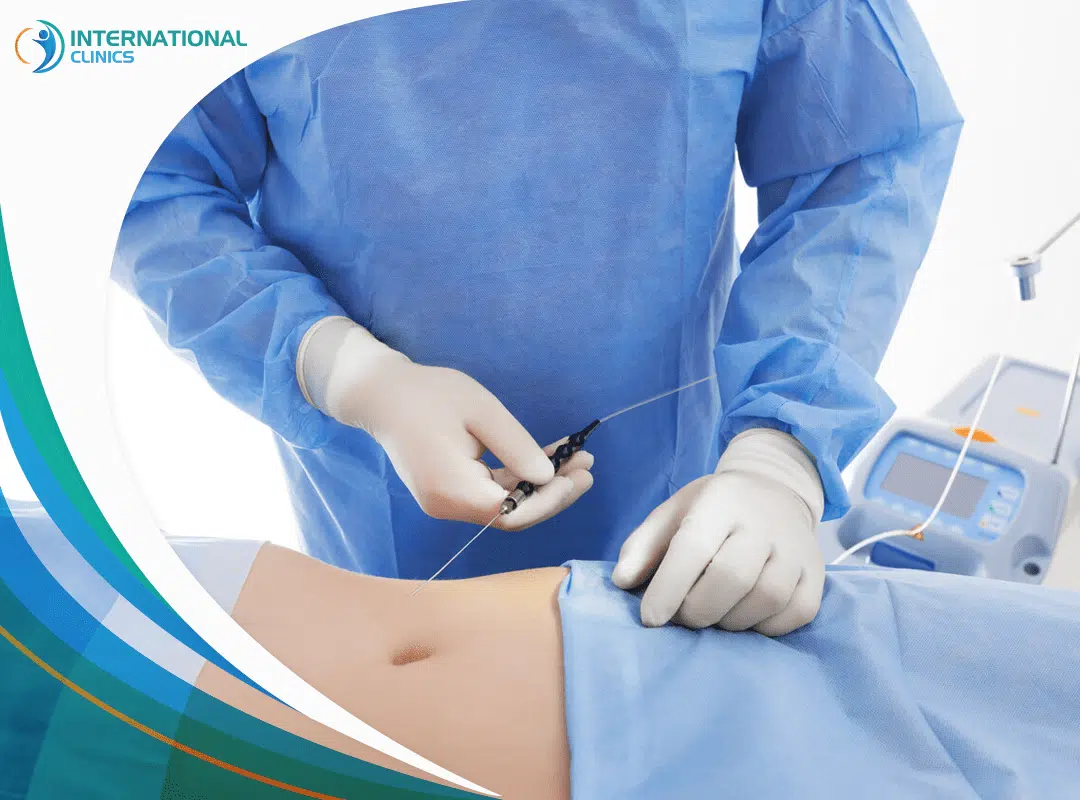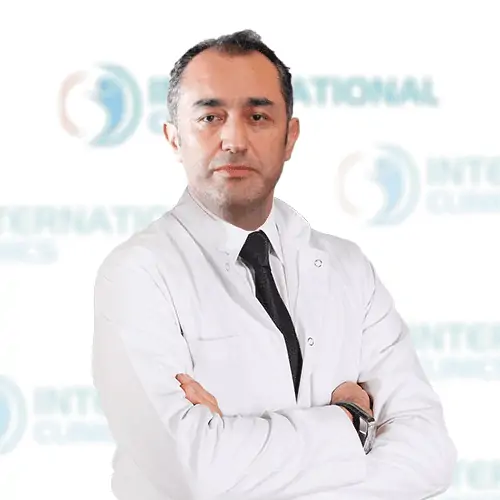Have you ever wondered how celebrities manage to maintain their perfectly sculpted bodies? Well, the secret might just lie in a revolutionary cosmetic procedure called laser liposuction.
This minimally invasive technique uses advanced laser technology to zap away unwanted fat, leaving you with a more defined and toned physique.
Unlike traditional liposuction in Turkey, which involves making large incisions and using suction to remove fat, laser liposuction offers a less invasive alternative.
By utilizing laser energy, this procedure targets specific areas of the body, melting away excess fat cells without causing extensive damage to surrounding tissues.
One of the major advantages of laser liposuction is its ability to contour and sculpt problem areas that are resistant to diet and exercise. Whether it’s stubborn love handles or bothersome belly fat, this innovative treatment can help you achieve your desired shape. If you’re considering undergoing invasive laser lipolysis but want to know more about how it works before making your decision, you’ve come to the right place.
The Role of Laser Technology
Laser liposuction, also known as laser lipolysis or laser lipo plays a crucial role in laser liposuction by targeting and breaking down fat cells through the use of heat energy.
The application of laser energy during the procedure helps to effectively remove unwanted fat deposits from various areas of the body. By directing concentrated heat towards specific areas, the laser breaks down the fat cells, making it easier for them to be suctioned out.
Furthermore, laser energy has an additional benefit in stimulating collagen production. Collagen is a protein that provides structure and elasticity to our skin. As we age or undergo weight loss, collagen levels can decrease, leading to loose or sagging skin.
However, with the introduction of laser technology in liposuction, this concern can be addressed. The heat generated by the laser stimulates collagen production, resulting in tighter and firmer skin.
The wavelength of the laser used in this procedure is carefully selected to specifically target fat cells while minimizing damage to surrounding tissues.
This precision ensures that only the targeted area is affected by the treatment while leaving neighboring tissues unharmed. It allows for more controlled fat removal and better sculpting results.
During a laser liposuction procedure, a small device called a laser applicator is used to deliver controlled bursts of laser energy directly into the treatment area. This applicator is moved back and forth over the desired area, allowing for an even distribution of heat energy and effective breakdown of fat cells.

4 Reasons Patients Choose Laser Lipolysis for Body Sculpting
1-Precise Body Contouring with Minimal Scarring
One of the primary reasons for this choice is that laser lipolysis offers precise body contouring with minimal scarring.
Because smaller incisions are made during laser lipolysis compared to traditional methods, scarring is minimized, leaving patients with more aesthetically pleasing results.
2- Effective Fat Reduction in Stubborn Areas
Another reason patients choose laser lipolysis is its ability to effectively reduce fat in areas resistant to diet and exercise alone.
Many individuals struggle with stubborn pockets of fat that seem unaffected by their efforts at weight loss or toning exercises. Common problem areas include love handles or double chins. Laser lipolysis targets these stubborn fat deposits directly, significantly reducing size and volume.
3- Shorter Recovery Time for Faster Return to Normal Activities
Unlike more invasive surgical procedures like tummy tucks, laser lipolysis offers a shorter recovery time, allowing patients to resume their normal activities sooner.
This is particularly appealing to individuals with busy lifestyles who cannot afford extended periods of downtime.
4- Enhanced Body Sculpting Results with Combination Procedures
In addition to its standalone benefits, laser lipolysis can also be combined with other cosmetic procedures to enhance overall body sculpting results.
Many patients choose to undergo multiple treatments simultaneously or in succession to achieve their desired aesthetic outcomes.
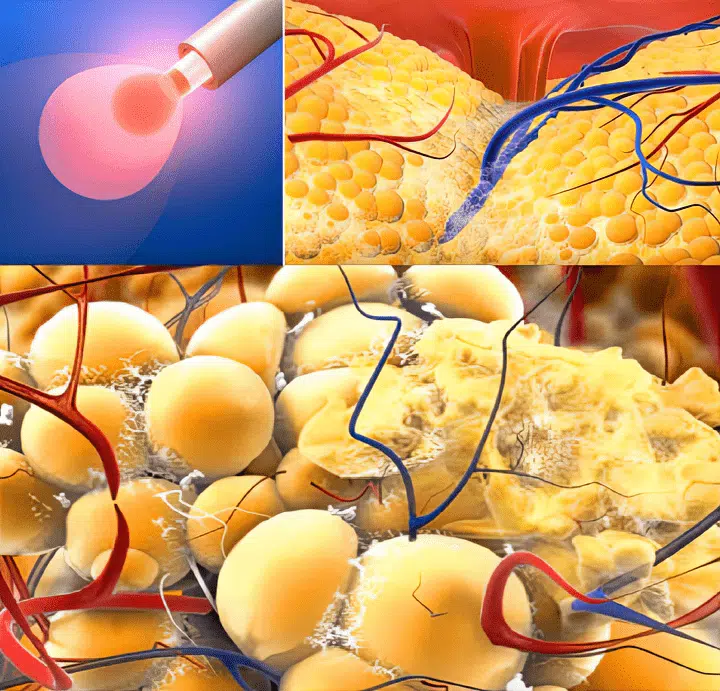
Candidate Eligibility for Laser Liposuction: Who is a Good Fit?
Not everyone is an ideal candidate. The procedure is best suited for individuals who are close to their ideal weight but have localized areas of excess fat that seem resistant to diet and exercise. Let’s delve into the key factors that determine if someone is a good fit for laser liposuction.
Ideal Candidates
Good candidates for laser liposuction are those who have already made efforts to achieve their desired weight through healthy lifestyle choices.
The procedure is not intended as a solution for significant weight loss, rather it focuses on refining body contours.
Skin Elasticity
Good candidates should have relatively good skin elasticity. After the removal of fat, the skin needs to tighten and conform smoothly to the new body shape. Therefore, If the skin lacks elasticity, it may not contract properly after fat removal, leading to sagging or loose skin.
Overall Health
Candidates considering laser liposuction should be in good general health and free from any underlying medical conditions that may increase the risks associated with the procedure. Disclosing any relevant medical history during your consultation with a qualified plastic surgeon is essential.
Realistic Expectations
In addition to physical health, having realistic expectations about the outcome of the procedure is crucial. While laser liposuction can enhance body contours and remove unwanted fat, it’s important to understand that it may not completely transform your appearance or address all concerns.
Consultation with a Qualified Surgeon
Determining whether someone is an ideal candidate for laser liposuction requires an individualized assessment by a skilled plastic surgeon.
During a consultation, the surgeon will evaluate various factors such as overall health, BMI, fat distribution, and skin quality.
They will discuss the potential risks, benefits, and expected outcomes specific to each candidate. Choosing a qualified surgeon with experience in laser liposuction is essential to ensure the best possible results.
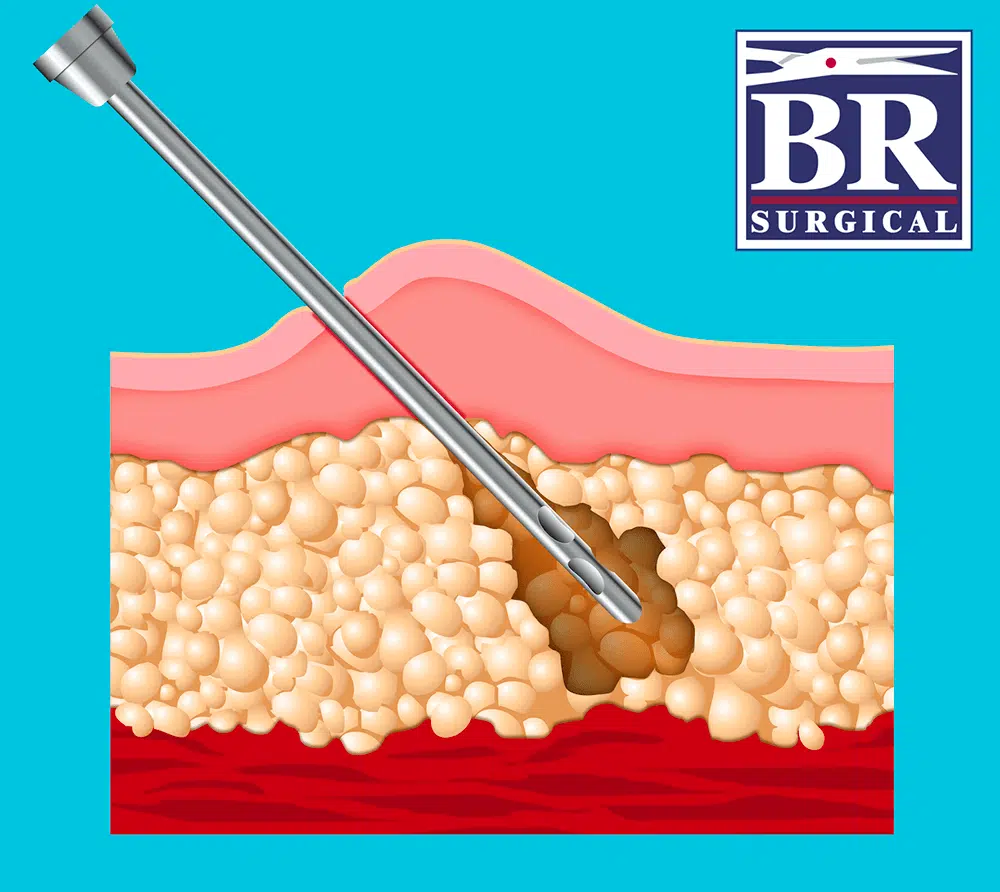
Targeted Body Areas for Laser Liposuction:
This advanced procedure allows plastic surgeons to contour and sculpt various regions, including:
- Hips
- Flanks
- Knees
- Back
- Abdomen
- Neck & Chin
- Upper thighs/buttocks
- Upper arms
- Underneath the chin/neck
Benefits and Potential Risks
Laser liposuction offers several benefits compared to traditional liposuction techniques. However, it’s important to be aware of potential risks and complications associated with the procedure.
Benefits of Laser Liposuction
- One of the key advantages of laser liposuction is minimal scarring. The use of a small cannula and laser technology allows for precise targeting of fat cells, resulting in smaller incisions that heal faster and leave minimal scars. This can be particularly beneficial for individuals who are concerned about visible scarring after their procedure.
- Another benefit is the shorter recovery time compared to traditional liposuction methods. Laser liposuction typically involves less trauma to the surrounding tissues, which leads to reduced swelling and bruising post-surgery. Patients often experience less discomfort during recovery and can return to their normal activities sooner.
- Laser liposuction has been found to have improved skin tightening effects compared to other methods. The heat generated by the laser helps stimulate collagen production in the treated areas, leading to firmer and smoother skin texture. This can be especially advantageous for individuals who have loose or sagging skin along with excess fat deposits.
Potential Risks and Complications
- While laser liposuction offers numerous benefits, it’s essential to understand the potential risks involved before undergoing the procedure. One significant risk is infection. Any surgical procedure carries a risk of infection if proper hygiene protocols are not followed during and after surgery. It’s crucial for patients to carefully follow their healthcare provider’s instructions regarding wound care and take any prescribed antibiotics.
- Bleeding is another potential risk associated with laser liposuction. Although bleeding during surgery is controlled through various techniques such as cauterization, excessive bleeding can occur in some cases. Patients should be aware of the signs of excessive bleeding, such as persistent or increasing pain, and seek immediate medical attention if they experience these symptoms.
- Uneven fat removal or contour irregularities can occur if laser liposuction is not performed by an experienced surgeon. It requires skill and precision to ensure that fat is removed evenly and that the desired body contour is achieved.
How Laser Liposuction Works
Laser liposuction, also known as laser lipolysis or laser lipo, is a popular cosmetic treatment that helps individuals achieve their desired body contour. This innovative procedure utilizes advanced laser technology to target and eliminate unwanted fat cells in specific areas of the body.
Administering Local Anesthesia for Patient Comfort
To ensure a comfortable experience throughout the laser liposuction procedure, local anesthesia is administered. This numbing agent helps minimize any potential discomfort or pain during the treatment. By using local anesthesia, patients can remain awake and alert during the session while feeling little to no pain.
Making a Small Incision for Laser Fiber Insertion
Once the patient is comfortably numb, a small incision is made in the targeted area. This incision serves as an entry point for the thin cannula that will be used during the procedure. The cannula is equipped with a laser fiber that will emit energy to target and break down unwanted fat cells.
Liquefying Fat Cells with Laser Energy
As the cannula with the laser fiber is inserted through the incision, it emits laser energy directly into the fatty tissue. The heat from this laser energy liquefies the fat cells, effectively breaking them down into smaller particles.
These smaller particles are then easier to remove from the body through suction or natural elimination processes and stimulate collagen production in the skin.
Removing Fat Cells Through Suction or Natural Elimination
In some cases, a vacuum-like device called a suction cannula may be used to gently extract liquefied fat cells through another small incision near the treatment site.
Alternatively, once broken down by laser energy, these fat particles can also be naturally eliminated by the body’s lymphatic system over time.
The choice between suction and natural elimination depends on various factors, including the patient’s specific needs and the surgeon’s recommendation.
While suction may provide more immediate results, natural elimination allows for a gradual reduction in fat volume as the body naturally processes and eliminates the liquefied fat cells.
Multiple Sessions for Desired Results
It is important to note that achieving desired results with laser liposuction often requires multiple sessions. The number of sessions needed varies depending on factors such as the extent of treatment required, individual goals, and the patient’s response to each session.
During a consultation with a qualified cosmetic surgeon, they will assess these factors and develop a personalized treatment plan tailored to the patient’s needs.
Recovery and Outlook After Laser Liposuction
Mild Swelling, Bruising, and Discomfort
After undergoing laser liposuction, it is common for patients to experience mild swelling, bruising, or discomfort in the treated area.
This is a natural response of the body as it heals from the procedure. The extent of these symptoms may vary depending on individual factors such as the amount of fat removed and the specific technique used during the surgery.
While some individuals may have minimal swelling and bruising that subsides within a few days, others might experience more pronounced effects that take slightly longer to resolve. Following your surgeon’s instructions regarding aftercare can help minimize any discomfort and promote a smoother recovery.
Resuming Normal Activities
In most cases, patients can resume their normal activities within a week following laser liposuction. However, it is crucial to listen to your body and avoid engaging in strenuous exercises or physically demanding tasks during this initial recovery period. Pushing yourself too hard too soon could potentially hinder the healing process or lead to complications.
It’s advisable to gradually reintroduce physical activity into your routine as you continue to recover. Light exercises like walking or gentle stretching can be beneficial for improving blood circulation and promoting healing without putting excessive strain on your body.
Timeframe for Visible Results
Individual results may vary depending on various factors. However, laser liposuction typically provides long-lasting results.
Once the targeted fat cells are removed from the body through this minimally invasive procedure, they do not grow back. Therefore The body needs several months to fully eliminate the liquefied fat cells that were targeted during the procedure.
Long-Term Success and Optimal Outcomes
It is important for patients to maintain a healthy lifestyle after undergoing laser liposuction to prevent new fat deposits from forming in untreated areas.
While laser liposuction can remove stubborn fat deposits, it does not prevent new ones from forming if unhealthy habits persist. Regular physical activity helps to improve muscle tone and overall body composition while supporting cardiovascular health.
Incorporating strength training exercises can also enhance your body’s ability to metabolize fat efficiently. Consuming a nutritious diet rich in fruits, vegetables, lean proteins, and whole grains will provide your body with the necessary nutrients for optimal healing and overall well-being.
Factors Affecting Results
The success of laser liposuction depends on various factors that differ for each individual. Skin elasticity plays an essential role in determining how well the skin tightens after fat removal. Younger individuals tend to have more elastic skin that can adapt better to their new contours than older patients.
Moreover, the initial body shape and distribution of fat also influence the outcome. Patients with a higher proportion of fat stored around organs, might not experience as dramatic a change in their external appearance compared to those with predominantly subcutaneous fat.
Following post-operative care instructions provided by the plastic surgeon is crucial for optimal results. These instructions may include wearing compression garments, avoiding strenuous activities, and attending follow-up appointments. Adhering to these guidelines can help minimize swelling, promote healing, and enhance overall satisfaction with the outcomes of laser liposuction.
Ensuring Patient Safety
To minimize risks and complications associated with laser liposuction, it’s crucial for patients to have a thorough consultation with their plastic surgeon.
During this consultation, patients should discuss any specific concerns or conditions they have that may affect the procedure’s suitability for them. The surgeon will evaluate the patient’s overall health, assess their individual needs, and determine if they are an ideal candidate for laser liposuction.
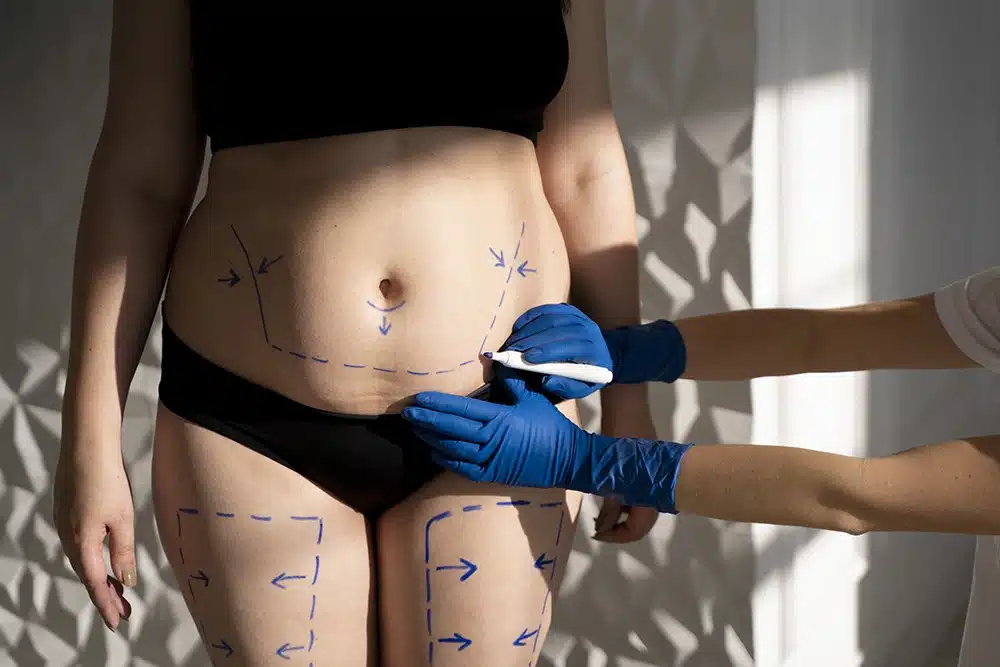
Comparing Laser Lipo to Traditional Liposuction: Minimizing Scarring and Invasiveness
Liposuction has long been a popular choice. However, advancements in technology have led to the development of laser liposuction as a less invasive alternative to traditional methods.
Let’s take a closer look at how laser liposuction works and compare it to traditional liposuction techniques in terms of minimizing scarring and invasiveness.
Smaller Incisions and Minimal Scarring
Unlike traditional liposuction techniques that require larger incisions resulting in more noticeable scars, laser liposuction uses smaller incisions resulting in minimal scarring. This is because the laser technology used in this procedure allows for precise targeting of fat cells, which means smaller cannulas can be inserted into the treatment area.
The use of smaller incisions not only minimizes scarring but also offers other benefits such as reduced risk of infection and quicker healing times. With laser liposuction, patients can expect smaller incision sites that fade over time, resulting in less visible scars compared to traditional liposuction procedures.
Less Invasive Procedure with Targeted Fat Removal
Laser liposuction is known for being less invasive than traditional methods. The laser energy emitted by these specialized devices liquefies the fat cells while simultaneously tightening the surrounding skin. Once liquefied, the fat is gently suctioned out through the cannulas. This targeted approach allows for precise contouring, resulting in smoother and more natural-looking results.
Precision and Better Results
One of the key advantages of laser liposuction is the use of laser technology, which allows for better precision during the procedure. This precision helps to ensure that surrounding tissues are left undisturbed, minimizing trauma and reducing the risk of complications.
The controlled application of laser energy also stimulates collagen production in the treated area. Collagen is a protein responsible for skin elasticity and firmness. By encouraging collagen production, laser liposuction can help improve skin tone and texture, further enhancing the overall aesthetic outcome.
Shorter Recovery Times and Less Discomfort
The reduced invasiveness of laser liposuction translates into shorter recovery times compared to traditional liposuction techniques. Since smaller incisions are made and less trauma is inflicted on the body during the procedure, patients typically experience less post-operative discomfort. This means they can return to their daily activities sooner without significant interruption.
Laser liposuction often involves local anesthesia rather than general anesthesia, which further contributes to a quicker recovery period. General anesthesia carries its own set of risks and may require a longer recovery time due to its effects on the body.
Cost Considerations for Laser Liposuction
In the United States, laser liposuction costs from approximately $25,00 to $10,000 or more per treatment area. The more areas you wish to target, such as the abdomen, thighs, or arms, the higher the cost will be. If you require extensive fat removal in each area, this can also increase the total cost.
Turkey is known for offering competitive prices for medical and cosmetic procedures, making it a popular destination for medical tourism.
On average, the cost of laser liposuction in Turkey can range from approximately $1,500 to $5,000 per treatment area. However, it’s important to note that these are estimated figures, and the actual cost can vary based on the factors mentioned above.
Factors Affecting Cost
The cost of laser liposuction is typically determined by multiple factors such as:
- Geographic location
- The number of treatment areas
- The extent of fat removal required
- Surgeon experience and expertise
Additional Costs
Aside from the base cost of laser liposuction itself, there are additional expenses that you should take into account when considering this procedure. These costs may include anesthesia fees, facility fees for using an operating room or clinic space during your surgery, as well as post-operative garments or medications.
Anesthesia fees cover the administration of anesthesia during your procedure to ensure your comfort throughout. Facility fees encompass any charges associated with using a surgical facility or operating room for your laser liposuction treatment. Post-operative garments are specially designed compression garments that aid in healing and optimize results after surgery.
It’s essential to consult with a plastic surgeon who specializes in laser liposuction to discuss these specific details and obtain an accurate estimate tailored to your case. They will be able to guide you through all potential costs involved so that you have a clear understanding of the financial commitment required.
Value for Money
While laser liposuction may have a higher upfront cost compared to non-invasive fat reduction methods, it offers more precise results that can be worth the investment. The technology used in laser liposuction specifically targets and breaks down fat cells, resulting in a more sculpted appearance.
Non-invasive alternatives like CoolSculpting or SculpSure may have lower price tags initially, but they may not provide the same level of precision or dramatic results as laser liposuction.
Laser liposuction allows surgeons to precisely contour your body, giving you a more defined shape and addressing stubborn areas that are resistant to diet and exercise.
When considering the cost of any cosmetic procedure, it’s crucial to weigh the potential benefits against the financial aspect. While laser liposuction may require a higher initial investment, many patients find that the long-term satisfaction and confidence gained from their improved appearance make it well worth it.
Making an Informed Decision
Before deciding on laser liposuction, it is crucial to research and understand the procedure thoroughly. Laser liposuction, also known as laser-assisted liposuction or laser lipo, is a minimally invasive cosmetic procedure that uses laser technology to remove excess fat deposits from various areas of the body.
This innovative technique offers several advantages over traditional liposuction, but it’s essential to gather all the necessary information before making a decision.
Consultation with a qualified plastic surgeon will provide personalized information about candidacy, expected outcomes, risks, and alternatives. Each individual’s situation is unique, and a consultation with a skilled professional will help determine if laser liposuction is the right choice.
During this appointment, the plastic surgeon will evaluate factors such as overall health, body mass index (BMI), skin elasticity, and specific areas of concern. They will discuss whether the person is an ideal candidate for laser liposuction or if alternative treatments may be more suitable.
Gathering testimonials from previous patients who have undergone laser liposuction can help gain insight into their experiences and results. Reading real-life stories from individuals who have already gone through the process can provide valuable perspectives.
Testimonials often highlight aspects like recovery time, discomfort levels during and after the procedure, as well as overall satisfaction with the outcome. However, it’s important to note that everyone’s experience may vary due to differences in individual physiology and personal expectations.
Taking time to weigh the pros and cons while considering personal goals will aid in making an informed decision about pursuing laser liposuction. It is crucial not only to focus on physical appearance but also to consider how it aligns with one’s mental well-being and self-confidence.
While laser liposuction offers significant benefits such as targeted fat removal and improved body contouring compared to traditional methods, there are also potential risks involved. Understanding these risks alongside personal aspirations can help individuals make a well-rounded decision.
One of the advantages of laser liposuction is that it requires a shorter recovery time compared to traditional liposuction.
While recovery periods can vary depending on the extent of the procedure and individual healing capabilities, most people can expect to resume their normal activities within a few days to a week. However, it’s important to note that complete healing and optimal results may take several weeks or even months.
In addition to considering recovery time, individuals should also factor in the commitment required for maintaining results. Laser liposuction is not a substitute for a healthy lifestyle.
It is essential to maintain good dietary habits and engage in regular exercise to prevent new fat deposits from forming in different areas of the body. By incorporating these practices into daily life, individuals can maximize the long-term benefits of laser liposuction.
It’s worth noting that while laser liposuction can effectively target localized fat deposits, it may not be suitable for everyone or every area of concern. A plastic surgeon will assess whether laser liposuction is appropriate based on factors such as skin elasticity and overall health.
In some cases, alternative treatments like non-invasive body contouring procedures or surgical interventions may be recommended instead.
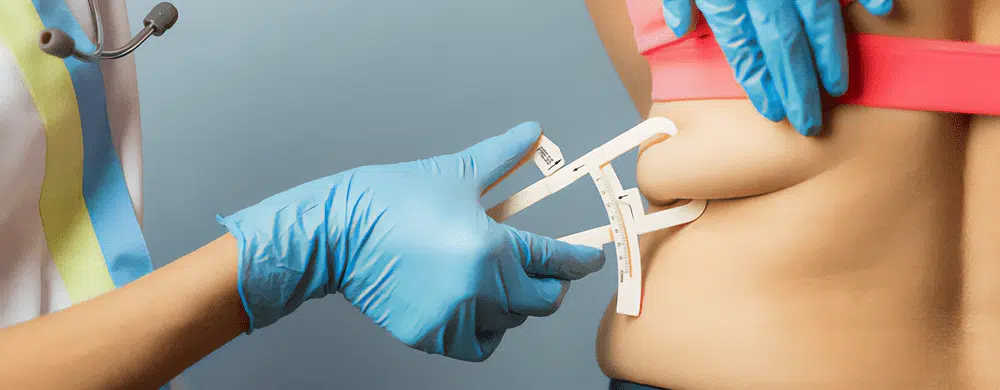
Safety of Laser Lipolysis: Addressing Concerns and Misconceptions
Laser lipolysis, when performed by a skilled plastic surgeon in an accredited facility, is generally considered safe. However, it’s important for patients to follow pre-operative instructions carefully and choose a qualified professional to minimize potential risks.
One common misconception about laser lipolysis is that it is a weight-loss solution. While the procedure can help contour and shape the body by removing stubborn pockets of fat, it is not intended as a substitute for weight loss through diet and exercise. Laser lipolysis targets specific areas of localized fat that are resistant to traditional weight loss methods.
Another misconception is that laser lipolysis can significantly tighten severely loose skin. While the procedure may have some mild skin tightening effects, it is not suitable for individuals with significant skin laxity or sagging. In such cases, alternative procedures like surgical body lifts or tummy tucks may be more appropriate.
To address concerns and misconceptions specific to individual patients, a thorough consultation with a plastic surgeon is essential.
During this consultation, the surgeon will evaluate the patient’s unique circumstances and goals, explain the procedure in detail, discuss any potential risks or limitations, and answer any questions or concerns the patient may have.
It’s important to understand that every surgical procedure carries some degree of risk. However, choosing an experienced plastic surgeon who specializes in laser lipolysis can greatly minimize these risks. A skilled surgeon will carefully assess each patient’s suitability for the procedure based on their medical history and physical condition.
During laser lipolysis, small incisions are made in targeted areas where excess fat needs to be removed. The surgeon then inserts a thin tube called a cannula into these incisions. The cannula emits laser energy that melts the fat cells while also stimulating collagen production in the surrounding tissues.
The liquefied fat is then gently suctioned out through the cannula. The laser energy also helps to coagulate blood vessels, reducing bleeding and bruising during the procedure. This minimally invasive approach allows for quicker recovery compared to traditional liposuction techniques.
Patients usually experience minimal discomfort during the procedure, which is typically performed under local anesthesia with or without sedation. The length of the procedure depends on the number and size of the areas being treated but typically ranges from one to three hours.
After laser lipolysis, patients may experience some swelling, bruising, and mild discomfort in the treated areas. However, these side effects are temporary and can be managed with pain medication prescribed by the surgeon. Most patients can resume their normal activities within a few days to a week after the procedure.
Number of Sessions Required for Optimal Results in Laser Lipolysis
Achieving optimal results in laser lipolysis requires careful consideration of several factors, including the number of sessions needed.
The exact number of sessions can vary depending on individual circumstances such as the amount of fat to be removed and the desired outcome. Let’s delve into this topic further and explore how many sessions may be required for you to achieve your goals.
Individual Factors Determine the Number of Sessions
There is no one-size-fits-all approach. Each person’s body is unique, and therefore, the number of sessions required will vary from one individual to another. Some people may find that a single session is sufficient to achieve their desired results, while others may require multiple sessions.
One crucial factor that determines the number of sessions needed is the amount of fat that needs to be removed. Individuals with smaller areas or less excess fat may only require a single session to see noticeable improvements.
On the other hand, those with larger areas or more significant amounts of fat may need multiple sessions spread out over several weeks or months.
Another factor that influences the number of sessions is your desired outcome. If you have specific aesthetic goals in mind, such as sculpting certain areas or achieving a particular body contour, it may necessitate additional treatment sessions.
During a consultation with a plastic surgeon experienced in laser lipolysis, they will assess your individual circumstances and discuss your goals to determine an appropriate treatment plan.
Consultation with a Plastic Surgeon
To determine how many laser liposuction sessions are recommended for optimal results, it is essential to consult with an experienced plastic surgeon specializing in this procedure.
During your consultation, they will evaluate various factors such as your overall health, body composition, and expectations.
The plastic surgeon will conduct a thorough examination and discuss your desired outcomes openly. They will consider factors like the location and size of the treatment area, the density and distribution of fat, and your skin’s elasticity.
By taking all these aspects into account, they can provide you with an accurate estimate of the number of sessions required to achieve your goals.
The plastic surgeon will explain the laser lipolysis procedure in detail, including any potential risks or complications.
They will address any concerns or questions you may have regarding recovery time, post-operative care instructions, and expected outcomes. Following their guidance diligently is crucial to ensure optimal results from each session.
Post-Operative Care Instructions for Optimal Results
To maximize the effectiveness of each laser liposuction session, it is vital to follow post-operative care instructions meticulously. Your plastic surgeon will provide specific guidelines tailored to your individual needs. These instructions typically include:
- Wearing compression garments: After laser liposuction, wearing compression garments helps reduce swelling and promote proper healing. Follow your surgeon’s recommendations regarding how long to wear them each day.
- Managing pain and discomfort: Your surgeon may prescribe pain medication or recommend over-the-counter options to manage any discomfort during your recovery period.
- Maintaining a healthy lifestyle: While laser liposuction can remove excess fat cells permanently, it is essential to maintain a healthy lifestyle through regular exercise and a balanced diet to prevent new fat accumulation in other areas.
- Attending follow-up appointments: Regularly scheduled follow-up appointments allow your plastic surgeon to monitor your progress, address any concerns or complications promptly, and make adjustments if necessary.
By adhering closely to these post-operative care instructions provided by your plastic surgeon, you can optimize the results achieved from each session of laser lipolysis.
Maximum Fat Removal with Laser Liposuction: Setting Realistic Expectations
Laser liposuction is a popular cosmetic procedure that effectively removes excess fat, helping individuals achieve their desired body contours.
However, it is crucial to set realistic expectations regarding the maximum amount of fat that can be safely removed during a single session. Understanding these limitations and working closely with a skilled plastic surgeon will ensure optimal safety and aesthetic outcomes.
Removing too much fat in one session
While laser liposuction offers impressive results, it’s important to remember that removing excessive amounts of fat in a single session can lead to complications and compromise the overall outcome. The human body has its limits, and pushing beyond them may negatively impact skin elasticity and contour symmetry.
A skilled plastic surgeon will carefully assess each individual’s circumstances before recommending an appropriate amount of fat removal.
Factors such as overall health, skin quality, and body composition play significant roles in determining the maximum safe limit for fat removal. By adhering to these limits, surgeons prioritize patient safety while still achieving satisfactory aesthetic results.
Individual assessment for optimal safety and aesthetics
Every person’s body is unique, which means there is no one-size-fits-all approach. A reputable plastic surgeon will conduct a thorough evaluation of your specific needs and goals before suggesting the ideal amount of fat removal.
During this assessment, your surgeon will consider factors such as your current weight, body mass index (BMI), target areas for treatment, and overall health history. This comprehensive evaluation ensures that the recommended amount of fat removal aligns with your circumstances.
By tailoring the procedure to your specific needs, you can have confidence in both the safety and effectiveness of laser liposuction.
Open communication with your surgeon about desired goals plays a vital role in establishing realistic expectations for the procedure.
Communication is key
To achieve satisfying results from laser liposuction while setting realistic expectations, open and honest communication with your surgeon is essential. Clearly express your goals and desired outcomes, allowing your surgeon to guide you through the process.
By discussing your expectations, concerns, and any limitations you may have, you enable your surgeon to provide accurate information about what can be realistically achieved.
They will explain the potential risks and benefits associated with different levels of fat removal, helping you make informed decisions about the procedure.
Remember that a successful outcome not only depends on the expertise of the plastic surgeon but also on mutual understanding between you and your healthcare provider. By working together as a team, you can ensure that laser liposuction delivers maximum fat removal while maintaining optimal safety.

Taking the Right Steps for Successful Laser Lipo Results
In your quest to achieve the body of your dreams, laser liposuction can be a game-changer. This innovative procedure utilizes advanced laser technology to help you sculpt and contour your body with precision.
By targeting specific areas of stubborn fat, laser liposuction offers a minimally invasive alternative to traditional liposuction, minimizing scarring and invasiveness.
During laser liposuction sessions, you can expect a comfortable experience as the targeted area is numbed with local anesthesia.
The laser technology then gently breaks down the fat cells, making them easier to remove. This process not only helps in removing excess fat but also stimulates collagen production, promoting skin tightening and enhancing overall results.
Eligibility for laser liposuction depends on various factors such as overall health and specific body goals. Consulting with an experienced surgeon will help determine if you are a good fit for this procedure.
Laser liposuction can be performed on multiple areas of the body, including the abdomen, thighs, hips, arms, chin, and neck. By selectively targeting these problem areas, laser lipo allows you to enhance your silhouette and achieve a more contoured appearance.
The recovery period after laser liposuction is relatively short compared to traditional methods. Most patients experience minimal discomfort post-surgery and are able to resume their normal activities within a few days. However, it’s important to follow post-operative instructions provided by your surgeon for optimal healing.
Patients often notice immediate improvements in their body shape following the procedure. Over time, as swelling subsides and collagen production continues to improve skin elasticity, the full effects become even more apparent.
One of the key benefits of laser lipo is its ability to minimize scarring and invasiveness when compared to traditional liposuction methods. The tiny incisions made during treatment typically heal without leaving noticeable marks, resulting in a more aesthetically pleasing outcome.
While laser liposuction offers numerous advantages, it’s essential to consider the potential risks involved. Although rare, complications such as infection, scarring, and uneven results can occur. However, by choosing a skilled and experienced surgeon, you can significantly reduce these risks.
Cost considerations play an important role when deciding on laser liposuction. The total liposuction cost in Turkey depends on various factors including the number of areas being treated and the extent of fat removal required. It is advisable to consult with your surgeon for an accurate estimate based on your specific needs.
To make an informed decision about laser liposuction, it is crucial to address any concerns or misconceptions you may have. By understanding the safety measures taken during laser lipolysis and discussing them with your surgeon, you can gain peace of mind and confidence in the procedure.
The number of sessions required for optimal results in laser lipolysis varies depending on individual goals and body composition. While some patients achieve their desired outcome after a single session, others may require multiple treatments for maximum fat removal.
It’s important to set realistic expectations when considering laser liposuction. While this procedure effectively removes excess fat and improves body contours, it is not a substitute for weight loss or a healthy lifestyle. Maintaining a balanced diet and exercise routine will help ensure long-lasting results.
In conclusion, laser liposuction offers a safe and effective way to sculpt your body with precision. By utilizing advanced laser technology, this minimally invasive procedure provides immediate improvements in body shape while stimulating collagen production for enhanced skin tightening effects.
Consulting with an experienced surgeon will help determine if you are eligible for this transformative treatment option tailored to your specific needs.
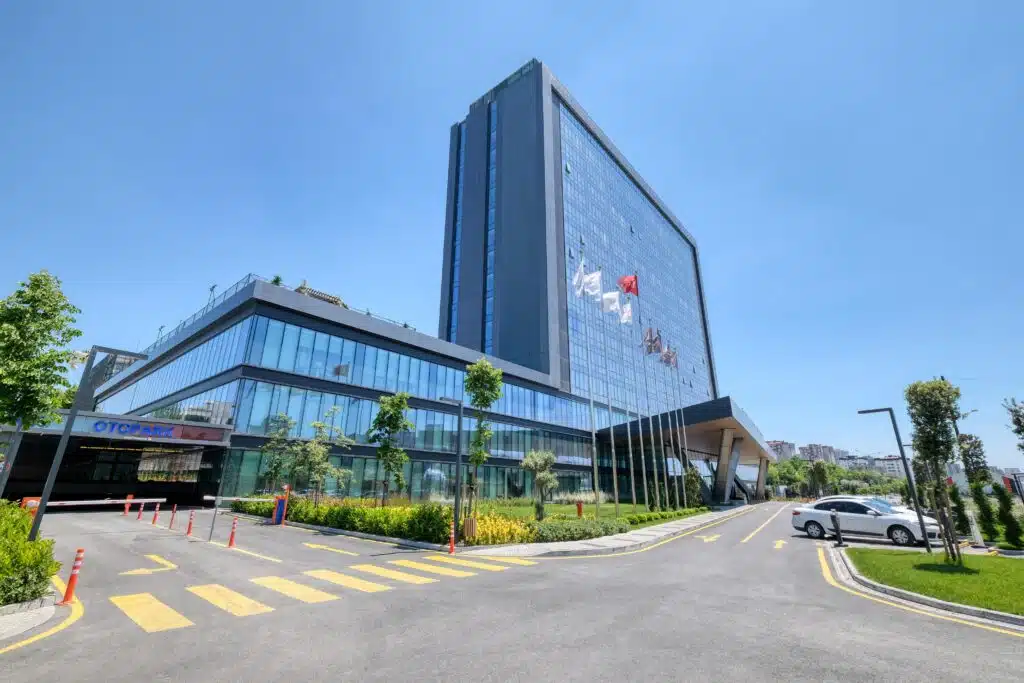
FAQ
Laser liposuction is not intended as a weight loss solution but rather as a method to target localized areas of stubborn fat. It is best suited for individuals who are close to their ideal weight and have specific areas they wish to address.
The recovery period after laser liposuction is typically short, with most patients able to resume normal activities within a few days. However, it’s essential to follow your surgeon’s post-operative instructions for optimal healing and results.
While laser liposuction can improve the appearance of cellulite, it is not a guaranteed solution for its complete removal. The procedure primarily focuses on removing excess fat and contouring the body.
The results of laser liposuction can be long-lasting if you maintain a healthy lifestyle after the procedure. However, it’s important to note that new fat deposits can develop if you gain weight in the future.
Laser liposuction is generally suitable for various body types. However, an initial consultation with a qualified surgeon will help determine if you are a good candidate based on your specific needs and goals.
